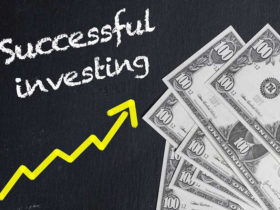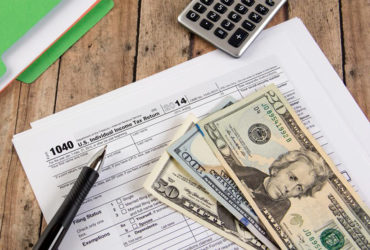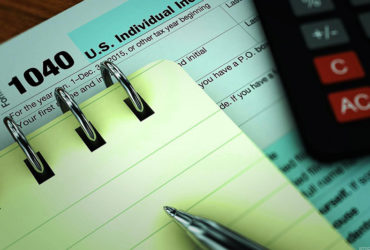Maximize Canadian income tax refunds legally; but don’t rely on the CRA to help you
You can get a 100% Income Tax refund but the Canadian Revenue Agency (CRA) will not help you, worse yet they’ll try to scare you into not doing it.
We pay out huge amounts of taxes in Canada every year. It’s a fact. Not that we shouldn’t pay tax; we need to for our public services, I accept that and I support that aspect of taxes. What I don’t support are unnecessary taxes or the fact that so much of our money seem to be lost in government ‘black holes’ with no benefit to society.
It’s just during the past few years my wife and I have researched how we can be in a better financial position. For me, this means being able to do the things I love and having the financial security to focus on them.
So during our search, we found out a way of increasing our Income Tax rebate in Canada through making charitable donations; which seemed like a win-win to us. This is an entirely legal strategy called tax avoidance (which is different from the very illegal tax evasion; withholding tax illegally by means of tax fraud).
So why is the Canadian Revenue Agency (CRA) not telling us we can pay less tax? Simple, this is not what they are here for.
How the system works against you
The Canadian Revenue Agency (CRA) is here to collect taxes. It may educate you about the ways to pay taxes, but it is not here to gain you tax benefits. This is not the fault of individual employees but rather how the system was created, which is to make as much money from the Canadian tax-payers as possible. So again, I am not saying you need to stop paying all taxes; I’m talking about a way to maximize Canadian Income Tax refunds.
Did you know that the reason Income Tax was created no longer exists?
It was created in 1917 to support the expenditure of the First World War. A temporary solution; the problem is the temporary measure is still in place and the pressure increases every year. The sad fact is the harder you work the more money you will pay.
Think of it this way; the average Canadian will pay $500,000 in taxes by the time they are 65. By retirement age the same Canadian has only $5000 in savings. The result: more and more people are being forced to extend their working life (and their tax payments) or, having to supplement their pension with additional work.
· This doesn’t seem fair to me.
Make the system work for you; how to make money from your taxes
The simplest method of tax avoidance is taking part in a tax shelter, which are legal under the Income Tax Act. This is kind of like a tax-payers co-operative!
· Simply put, tax shelters are designed by eagle-eyed accountants and tax experts to make the tax system work for your benefit instead of the governments. Tax shelters do not withhold tax illegally from the government, which is tax evasion or tax fraud. Tax shelters work WITHIN the system.
Due to a very nice British Duke in the 1930s, tax law states that we are expected to save as much money on our tax as possible, even if the Canadian Revenue Agency (CRA) does not like that law, it still exist. This is the legal principle that allows tax shelters to function.
Although there are many different shelters out there, my wife and I opted for an Open Market Structure, which uses a fair market value system. This basically means that the shelter makes sure that any item we donated was fairly assessed by an independent evaluator.
· To clarify, most tax shelters that made it to court were the ones that used a non-impartial evaluator, in other words they did NOT comply with a Fair Market Value principle. So watch out for this when looking for a program.
So in a nutshell, we donated money to charity through a tax shelter, transformed the lives of people in the poorest parts of the world AND maximized our own tax refunds. On my blog I have outlined all the different kinds of programs and given some tips on how to identify them, so it may be a good place to start your research.
So the CRA does not help, can they hurt me?
If your tax shelter is not legally compliant, you could end up paying back any profit.
· But, bear in mind due to how long the Canadian Revenue Agency (CRA) takes to fully re-assess this could be 7 to 10 years after the initial investment. During which time, as an average investor you should have re-invested the money to make it grow for you as part of your financial plan to success.
Even if your tax shelter is legal, you should always choose a structure which has a large defense fund, preferably held outside of the shelter itself. The tax shelter we opted for had a legal defense fund held in a secured trust account, which can only be used to prove it’s compliance in the Supreme Court of justice, if needed.
Also, if your shelter is re-assessed it is just that, "the shelter", NOT you individually.
· When you take part in a tax shelter, the program code supersedes your SIN (social insurance number) which means that whilst you take part, you will not be personally audited!
So, as you can see there is minimal risk. Warnings are given out on the Canadian Revenue Agency (CRA) website about certain types of tax shelter structures. We personally chose a structure that the Canadian Revenue Agency (CRA) has no issue with. You also need to remember that the warnings given on the Canadian Revenue Agency’s website are NOT legally binding (that was news to me too!) and that it’s in their best interest to maximize THEIR tax collection.
Finally, this is all information I am passing on from my own experiences, check my blog for a more in-depth due diligence analysis of tax shelters.
Remember, the Canadian Revenue Agency (CRA)is not here to make you money, but to get your money!
















